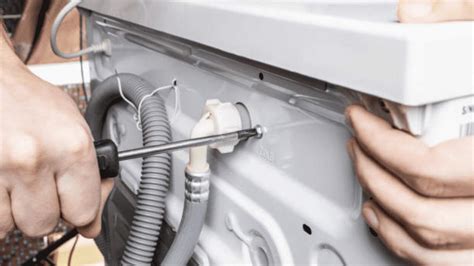How to Drain Water From Your Washing Machine: A Step-by-Step Guide
Dealing with a washing machine full of water can be a frustrating experience. Whether your machine stopped mid-cycle, you're facing a power outage, or need to perform maintenance, knowing how to drain the water safely and efficiently is crucial. This guide provides a comprehensive, step-by-step approach to draining your washing machine, regardless of its type (top-load or front-load).
Understanding Your Washing Machine
Before you begin, it's important to understand your washing machine's type and features. Top-load and front-load washers have different draining mechanisms. Knowing your model will help you identify the correct draining method. Consult your owner's manual if you are unsure.
Top-Load Washers
Top-load washers generally have a simpler draining process. They often feature a drain pump readily accessible, usually located at the bottom of the machine.
Front-Load Washers
Front-load washers, on the other hand, may require a slightly more complex approach. The drain pump is usually less accessible and might involve removing panels or accessing a specific part of the machine. Always check your owner's manual for specific instructions.
Safe and Effective Draining Techniques
Caution: Always unplug your washing machine from the power source before attempting any draining procedure. This is a crucial safety step to prevent electrical shock.
Method 1: Using the Emergency Drain (If Available)
Some washing machines, particularly newer models, have an emergency drain feature. This usually involves a small hose or valve located at the bottom or rear of the machine. Check your owner's manual to locate this if your machine has it. If present, this is often the easiest method. Carefully position a container to collect the water and open the valve.
Method 2: Using a Bucket and Siphon (For Top-Load Washers)
This method is suitable for top-load washers with readily accessible water.
- Prepare: Gather a large bucket and a siphon hose (available at most hardware stores).
- Position: Place the bucket next to the washing machine.
- Siphon: Submerge one end of the siphon hose into the washing machine water, ensuring it reaches the bottom. Start the siphon by sucking on the other end until water flows. Be careful not to swallow any water!
- Drain: Let the water drain into the bucket. You may need to repeat this process multiple times to remove all the water.
Method 3: Accessing and Using the Drain Pump (For Both Top and Front Load Washers)
This method is often necessary for front-load washers and sometimes top-load washers without an emergency drain. This usually requires some technical knowledge and you might need to consult your owner's manual.
- Locate the drain pump: This is usually located at the bottom of the machine. You might need to remove panels or access a specific part of the machine to reach it. Again, consult your owner's manual for specific instructions.
- Disconnect: Carefully disconnect the hose connected to the drain pump.
- Drain: Allow the water to drain into a bucket. You may need a container large enough to handle the water's volume.
Method 4: Calling a Professional
If you're uncomfortable performing any of the above steps or are unsure about your washing machine's model, it's always best to contact a qualified appliance repair technician. They have the expertise and tools to safely and efficiently drain your washing machine.
Preventing Future Issues
Regular maintenance can help prevent water from accumulating in your washing machine. This includes:
- Checking the drain hose: Ensure it’s not kinked or clogged.
- Cleaning the drain pump: Periodically inspect and clean the pump to remove debris.
- Regular checks: Inspect the machine for any leaks or blockages.
By following these steps, you can effectively drain water from your washing machine and prevent potential damage. Remember safety first! Always unplug the machine before attempting any draining procedure.
